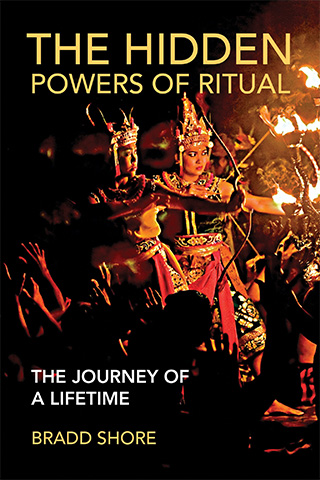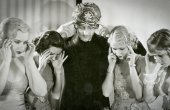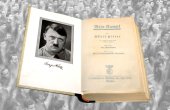The Hidden Powers of Everyday Ritual

So much of our lives is dictated by forces — economic, political, physiological, ecological — over which we have little control. Ritual, on the other hand, gives us all a powerful tool for helping to shape and reshape our lives, says Bradd Shore, a psychological anthropologist who has spent a career studying the phenomenon.
“My surprising conclusion is that ritual is perhaps the most powerful tool in the human toolkit that is largely under local control,” Shore says. It’s one of the lessons he learned during the decade in which he headed Emory University’s now-defunct Center for Myth and Ritual in American Life, which the Alfred P. Sloan Foundation tasked with examining the role of ritual and storytelling in the life of southern middle-class families.

After years of doing research in far-off South Sea islands, Shore was now shadowing families through the ritual cycles of their day, their week, their season, and their year. He came away not only impressed by the resilience of these families but also convinced that their rituals were central ways in which they shaped their family cultures and the culture of their communities.
But it was only years later, as Shore taught graduate seminars on ritual, that all the fragments of insight he had gathered over the years — from West Africa to Bali to the American South — began to converge into the picture of ritual that he portrays in his new book, “The Hidden Powers of Ritual” — a picture that incorporates insights from biology, animal studies, psychology, sociology, anthropology, and his personal encounters over 50 years.
Our capacity to ritualize behavior is a remarkable part of the human story, Shore stresses in our discussion, a story with many fascinating implications that usually go unnoticed, in part because the elaborate, more obvious rituals — “big-R” rituals, as he calls them — often overshadow the humbler ritual moments of life.
It might be useful to start with a definition of “ritual”? How does ritual differ from routine?
A “ritual” comes into being when ordinary behavior is repeated until it begins to harden into recognizable action patterns we call “routines.” Routines are efficient ways of getting jobs done by creating sets of automated, repeatable actions. Routines simplify our lives by offloading complex actions from working memory, so we do them without much cognitive effort. Our morning grooming routine gets us ready for the day. Our house-cleaning routines simplify keeping our living spaces in order by turning a series of actions into a semi-automatic action set. Routines are behavior on automatic pilot.
But once our acts have crystallized into a fixed routine, they may keep evolving, taking on symbolic significance and adding layers of meaning to our actions — this is called “ritualization.” We can think of rituals as routines with a significant symbolic load.
You’ve dedicated your career to studying rituals. What initially sparked your interest in them, and what has sustained it?
Like most Americans, I didn’t pay much attention to rituals when I was growing up. We didn’t have a very ritual-driven family life. I would roll my eyes at the thought of participating in rituals when I was a kid. When I was 13 I remember asking my grandmother what the point was of performing my Bar Mitzvah Torah reading in a language I didn’t understand. “Just read the Hebrew,” she said. You don’t have to understand. God will understand.” I really didn’t understand.
Ritual caught up with me years later when I had just graduated from college and found myself in Western Samoa, living in a small village on a remote Polynesian island as a Peace Corps teacher. Here in a Samoan village, rituals seemed to permeate life. There were big ones like chiefly installations, funerals, or kava ceremonies. But even everyday encounters of villagers involved greeting rituals, leave-taking rituals, and even passing-by-a-house rituals and special ritual language forms. I recall my early feelings that Samoan life was very artificial, lived from the outside in. I didn’t understand. But gradually, I began to understand the hidden wisdom of all this formality. These rituals were a powerful way of “tuning” social relationships and keeping them in good form. Ritual was beginning to make sense to me.
But what about the rituals of our own cultural world? Studies of American rituals were relatively scarce, but a few caught my eye. On the face of it, we didn’t have anything comparable to the elaborate rituals of New Guinea or West Africa. The study of “everyday ritual” was not a major topic for anthropology, but was left for sociologists like Erving Goffman whose many books on everyday “interaction ritual” in our own world were very popular, but not so influential for anthropology. You had to choose between big exotic rituals in anthropology (“them”) or the homespun rituals of everyday life (“us”) in sociology.
I would not get a chance to put the two traditions together until 2000 when I was approached by the Sloan Foundation with a request to apply for a huge grant to set up a research center at Emory University to study ritual and storytelling in middle-class Southern families.
That was the Center for Myth and Ritual in American Life (MARIAL), which you led for a decade. What insights did you gain from the studies that emerged from that program?
We learned many things from the collective research of the many members of our research center. My own research project focused on how families in a small Georgia town marked the cycles of day, week, month, season, and year through ritual and story. I talked with them every few weeks going over stories about their time together as a family. I shared some of their holidays, went to school with their kids, and took guided tours of their homes and their photo albums.
In a mobile society where moving on, moving up, and moving out are ideals, what is left of “the family” is often the product of our rituals and stories.
After years of doing research in far-off South Sea islands, I thought the research in my own backyard would be boring. It was anything but boring. I learned about the power of rituals and stories to create a distinctive family life, a life that shared enough with similar families to suggest a strong set of community ties but that was also differently orchestrated in each family. The house tours were especially interesting in that the house was clearly divided by the symbolic ownership of space. Kitchens were mom spaces, workshops and garages were dad spaces, and kids had to find their own spaces. This was not quite a collective space. When kids were small enough that parents could enter their bedrooms at will, they all created hideouts in the attic or the backyard that were their private sanctums. These only gave way when the kids got old enough to shut their bedroom doors and declare their rooms to be their spaces. The sense of private property ruled the American middle-class household.
The problem of how corporate the family was turned out to be a serious issue. In general, I discovered that though the home was a nostalgic collective space for middle-class Americans, it was in fact only a temporary home for the kids, who were being groomed for the day when they would leave home. The American nostalgia for home and family is closely tied to the American domestic cycle and labor pattern whereby a family unit is created for a limited number of years only to unravel as the kids go away to school or for work, or to create their own family units. The idea of losing and then returning home is a powerful and often unrecognized cultural myth in middle-class America and suggests why our most powerful rituals are “homecomings” like Thanksgiving, or Christmas, where a dispersed family is magically reinstated in a family’s house around a family table. Through our research, we learned that while families make rituals, it is equally true that our rituals make our families. In a mobile society where moving on, moving up, and moving out are ideals, what is left of “the family” is often the product of our rituals and stories.
Yet, you write that by the time MARIAL completed its work, you were “still not sure why the kind of behavior we call ritual mattered so much in human life.” Do you feel closer to having solved that mystery now?
I think so. The chapter on the 10 powers of ritual suggests the more general conclusions I reached by the time I wrote this book. The final chapter suggests my more personal reflections on how my understanding of ritual has affected my personal life. The abstract, more theoretical insights of chapter six are complemented by the more concrete and homely insights of chapter 13. Neither chapter could have been written when we closed down the MARIAL Center in 2010.
A few of those powers you discuss in the book, such as reducing anxiety and embodying meaning, are probably familiar to most readers, but there are others that didn’t occur to me. Could you elaborate on some of those less evident powers?
It’s true that some of the powers of ritual I discuss are fairly obvious, but even the obvious ones have some unexpected implications. Among the less obvious powers of ritual I discuss, two of special interest come to mind. The first has to do with creating rhythm and structuring time in our lives. In that section of the chapter, I highlight that humans operate simultaneously at many different rhythms. These include biological clocks that govern waking and sleeping, pulses specific to each organ, cycles of respiration, down to the vibrations of our body cells and, beyond that, the hum of their atoms.
We’re not conscious of most of these rhythms, except for the rhythm of our breathing or the beating of our hearts. At a different rhythmic time scale are the units of time that we orchestrate for our lives, day-to-day, month-to-month, year-to-year. Here, we find ritual as one of the most important ways we mark time and give our lives a predictable shape and pulse. While rituals, in particular, provide us with important rhythmic markers, the capacity for ritualization provides us with a very potent general tool for creating and manipulating the tempos of our lives. Rituals offer both the comfort of rhythmic regularity and the flexibility to adapt to changing circumstances, enabling us to keep time and stay in sync with the pace of life. With ritual, we can both keep time and keep up with time.
With ritual, we can both keep time and keep up with time.
The other unexpected power of ritual I would highlight is what I term “agency reversal.” This is not a term I have encountered in the vast literature on ritual, but it is one of ritual’s most important powers. Watch any video of people dancing ecstatically or a crowd chanting rhythmically. You are watching agency reversal in action.
In an ecstatic ritual performance, the power of the rhythmic action reverses the experience of who’s doing the action. Dancers may begin by feeling that they are dancing, but as the pulse of the action intensifies, there comes a point of reversal, when the dance starts performing the dancer. The ritual takes over. In intense sports, such reversal is known as an experience of “flow.” While only an especially intense ritual produces the total reversal we know as trance, where the performer is carried away, all ritual conveys some degree of agency reversal.
As a socializing mechanism, agency reversal can create a powerful bonding experience among performers. Military ritual comes to mind. In religious rituals, agency reversal is the closest humans come to a sense of contact with a transcendent agent.
What are a few of the ways we can harness the powers of ritual?
The last chapter is full of relatively simple, down-to-earth suggestions. So many of the forces that impinge on our lives are well beyond our control. We make contributions to charities to help the unfortunate, but we really can’t cure cancer, prevent homelessness, or end the war in Ukraine. Faced with inflation, we make small adjustments to our spending, trim our budgets, or take on an extra job. But we really cannot do much about the economy. To help the environment or slow climate change, we may recycle our garbage or invest in an electric car. But we know we’re not making much of a dent in the climate or the environment.
But there is one thing over which we have remarkable control: how we shape our time. My surprising conclusion is that ritual is perhaps the most powerful tool in the human toolkit that is largely under local control. Orchestrating our rituals is a human power. For most of us, it is also an obligation. Starting a new family, for example, involves negotiating a distinctive pattern of family ritual, shaping the week, the month, the season, and the year. Every new family has to create a new ritual order, forged out of the histories of the ritual lives of new parents and out of the desires and insights they bring to the job of making a home and family. I recommend being mindful of this obligation, for the patterns set by our stories and rituals will powerfully shape our kids’ sense of who they are and, eventually, their memories of their life journey.
Something done once is just an act. Done twice, it is a repeat. But beyond that lies the endless expanse of ritual. “This is what we do together.” “We always do that.” “We used to eat here.” “This is who we are.” In the age of the internet, ritual gatherings can be accomplished through video calls, so physical distance is no longer an impediment to ritual gatherings. And it’s not just for families. In that closing chapter I describe rituals that bring together groups of friends or even whole communities. Such rituals may be hard to get going, but after a few successful gatherings, social rituals tend to take on a life of their own. This is the gift of agency reversal.
And finally, there are the miraculous powers of individual rituals, which can provide a surprising sense of peace and comfort in the face of sorrow, loneliness, or stress. Consider the power of an evening cup of tea enjoyed in a favorite teacup. Quickly, “a cup of tea” becomes “my cup of tea” as you take a simple act to heart. Ritualization is a potent stabilizing agent, a simple salve for a stressful time if only we are mindful of how we use its powers.
Bradd Shore is Goodrich C. White Professor Emeritus of Anthropology at Emory University. A psychological anthropologist specializing in ritual studies, culture, and cognition, he is the author of over 70 papers and six books, most recently “The Hidden Powers of Ritual.” He was awarded the Society for Psychological Anthropology’s Lifetime Achievement Award in 2019 after having served as its president.



